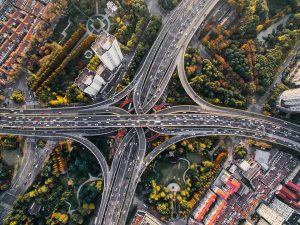Isn’t it time we pay for quality news?
Summary
Most news outlets in India earn their revenues in three ways – advertising, subscription, and advertiser funded content.
There is a story about the early days of news broadcasting on BBC radio. It was customary to have a news programme, fifteen minutes long, that told the British population about the goings on in their country, and the Empire.
One day in April 1930, the news presenter made a startling announcement “today, there is no news”, and proceeded to play piano music. Today, the world has changed. A star child calling his father ‘papa’ makes it to the headlines.
Ever since CNN launched the first satellite news channel in 1980, there has been an explosion in the number of news outlets bringing us the news.
News, until this time, was run primarily as a public good, by private individuals, governments, and trusts. The activity of delivering news was subsidised by the State. Competition was regulated by the State, and there were clear-cut guidelines on who could deliver news to the citizen. This entire activity was aided by the fact that the barriers to entry, were high, because of the costs associated with gathering and distributing news. But, new technologies changed the scenario.
As Moore’s Law kicked in, and the microchip began getting smaller, and being able to carry more data, the costs associated with gathering and disseminating news began dropping drastically. News transformed from being a public good, that citizens needed to make informed choices, to becoming a commodity that we used, consumed, and disposed – like any other fast moving good.
With the dawn of the digital era, this glut of news increased organically. Now, anyone with a digital device, and an opinion or two, can technically start a news brand, and deliver ‘news’ to their limited audience. And, that has pretty much what has been happening.
When news was a public good, it was clear – no matter what the editorial bias of the publication- that there was a certain responsibility to deliver accurate news and views on important happenings to the audience. Because of the nature of the good, and the costs involved, news was rationed. Once a day in a printed form.
Once a day, in each language, as video. Maybe a few times a day as audio. Also, there was a very clear hierarchy of what was news, and what was not. For example, two decades ago, the only time film stars would make it to the front page of a respected newspaper was if it were a death announcement.
Relationships, divorces, movie releases and the rest would be confined to gossip magazines. However, as news moved to a round the clock format, it became commoditised, and the need for new forms of ‘news’ came up.
The moment news became a commodity, the rules under which news operated changed. It was no longer about informing, educating, and making the audience aware of issues. News goals were now audience acquisition, market share, revenues, and profits.
None of them are bad terms in themselves, when applied to soap or tea. But apply it to a public good, and all hell will break loose, because of the nature of the good.
This year, as per the Ministry of Information and Broadcasting, there are 388 news channels. The number of newspapers and magazines, in 2017 was 1,14,820 – around 17,000 newspapers, and 98,000 magazines. There is no estimate – accurate or otherwise – of digital news sites. While the numbers are impressive and can be used to depict a diverse, thriving, democratic nation with a plethora of choices, it also denotes massive oversupply.
Most news organisations in India earn their revenues in three ways – advertising, subscription, and advertiser funded content. In print, subscription rates are the highest – between Rs 2 and Rs 10 per day per publication. Most publications charge around Rs 4.
TV comes second with rates ranging between Rs 1 and Rs 2 per month. That is works out to between 3-5 paise a day. And, digital content is mostly free – there are a few sites that have tried to go subscription based, but it is an uphill climb.
There are two reasons why the subscription rates are so low. The first is to maximise the number of readers, it is assumed that lower the cost, more the readers. The second is to act as a barrier to entry for new entrants. At these subscription rates, it would be difficult for a new entrant to make profits. Given these, the only option left for news organisations is to turn to the advertiser for revenues. And, the advertiser is not interested in the ‘public good’ nature of news, they are interested in pushing their own agenda.
Whether we look at fake news, or we look at planted news, be it paid news, or celeb plugs – one thing is clear we get what we pay for – in this case we pay for next to nothing and get slightly more than that.
If we want news that informs us, that enlightens us, and enables us to make the right choices, maybe we need to avoid free, or almost free, content, and look at organisations that are investing in news gathering and providing genuine value to their readers on issues that impact them.
With the issue of ‘paid news’ looming large, in India and elsewhere, it is clear someone has to pay for news – if it is not the reader, it is the one setting the agenda. What would you prefer?

Elon Musk forms several ‘X Holdings’ companies to fund potential Twitter buyout
3 Mins Read
Thursday’s filing dispelled some doubts, though Musk still has work to do. He and his advisers will spend the coming days vetting potential investors for the equity portion of his offer, according to people familiar with the matter









 Listen to the Article
Listen to the Article  Daily Newsletter
Daily Newsletter





















